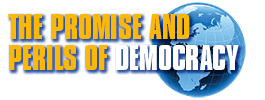This post is part of an ongoing series on inequality and Covid-19. Prior articles are here and here.
The arrival of Covid-19 has highlighted and increased social inequalities, taking the United States into an unknown and potentially precarious future.
Income levels have dropped for large groups, and unemployment rates since the outbreak of the pandemic are soaring. Entire groups of low-income workers, especially in the service sectors, were forced out of their jobs. In addition, bartenders, event planners and staff – in short, everyone in the offline entertainment industry – became unemployed, the impact of which was insufficiently offset by a one-time crisis payment of $1,200 for taxpayers and spottily-implemented emergency business supports. Typically, inequality effects have taken on different dimensions again by age and race.
The first weeks of the outbreak particularly devastated poor New York neighborhoods, where income and race intersect, with infection and death rates higher and hospitals more overwhelmed than in rich ones. The impact of the pandemic on lower income groups became visible early on, as rent payments came into jeopardy. Thomas J. Waters from the Community Service Society, City University of New York (CUNY) adjunct professor and PhD candidate at the CUNY Graduate Center, was among the first to report on this, before he died from Covid-19. Those not able to pay rent and the homeless were further victimized by inadequate housing policies, as John Krinsky, another CUNY scholar, has commented.
At the same time, the income differential in Covid-19 deaths showed its macabre face in the US higher education system. CUNY, the public university system with a substantial low-income student segment, and known for catapulting most working class students into the middle classes, counted more Covid-19 related deaths than private colleges. Inequality hits here along racial lines, also.
Poor families suffered from more than income loss. When Governor Cuomo and NYC mayor de Blasio finally decided to close schools, school and daycare options moved online. For a while, the entire teaching profession gained new respect as teachers and professors worked day and night to create online classes. While some families went through more turbulent times, having their school children at home and needing to juggle work from home and home schooling, the education of poorer children fell behind. There was lack of technical equipment or simply wifi access, or lack of social cohesion in families stressed out by unemployment or forced to go work as essential workers. We will see the effects of that only in the future.
At the same time, in the early, anxious months of March and April, a new group of heroes was “discovered”: nurses, cleaning staff and other hospital workers, supermarket personnel, mass transit workers – often lower income groups – all now were essential and celebrated. They often could not and would not refuse to carry out dangerous jobs.
Taking a step back, other staggering dimensions of inequality come into view. After an initial drop of the stock markets in April, the market recovered and is now back to prior highs. While fifty-five percent of all Americans own stocks, higher income households dominate that number by a high margin. Spending by the rich, including those who kept their jobs in home offices, has not climbed back to prior rates. Brick and mortar businesses, such as bars, restaurants and retail stores, have been hit hard and continue to suffer. But online spending is not back yet, either. Now, five months in, while the curve has flattened in some US states, the pandemic is raging in others. Some states have tried to return to “normal” and have failed spectacularly. To top it all off, enhanced unemployment payments expire this week.
